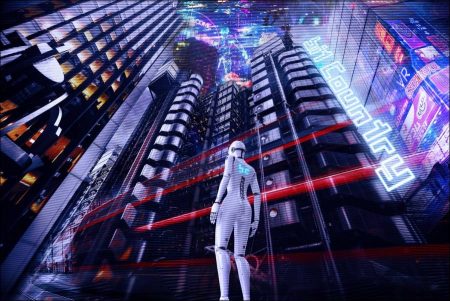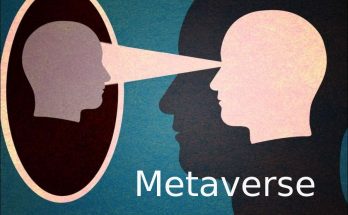It is an urban setting developed along a 100 meter wide road. People can buy virtual lands and build their own buildings here.
In this book, in Stephenson’s metaverse, people can appear however they want, with the exception of the height restriction (people can’t have an avatar taller than they are, so people don’t walk around 1 mile). While inside, the person experiences events from a first person perspective. In the Metaverse, people cannot jump from one place to another, they have to go on foot or by train. Entrances to the Metaverse are made from certain points, people cannot appear suddenly.
Advantages of the second world
When I first started reading the novel, I thought of many scenarios about how this technology would change our lives in a positive way. For example, such a virtual environment can eliminate distances and cause virtual meetings to be held and thus reduce environmental pollution. Or, in this environment, a person can receive training and improve his reflexes in many practical matters, from surgery to driving a car, without risking his life. People can live in different cultures and get to know different cultures. This second world certainly has many advantages to offer.
But Stephenson’s novel also referred to a host of worrying details. People connected to the metaverse glasses they wore via a personal terminal projecting a high-quality virtual reality screen. A group of people begin to live in this Metaverse without ever leaving it. Because of their strange appearance, these people are referred to in the book by the nickname “gargoyle” for gargoyle statues.
Would a person really want to live permanently connected to a virtual world? There were no smartphones then, so my answer was no. But after seeing how we connect to phones, my answer is almost certainly yes. Moreover, after getting to know the social media and advertising culture, I am seriously worried that the metaverse could have devastating consequences for a serious segment of society. I would like to address these concerns in the remainder of the article.
Despite all the attractiveness of the age we live in, I think it contains two important problems. First of all, our communication with people has started to be established largely through technology, especially social media. This put a serious barrier at the point of people understanding each other. Humanity is genetically adept at recognizing intentions by reading other people’s facial expressions and behavior. However, as the relationship becomes virtual, this mastery is lost and we become unable to read the intentions and feelings of the other person. As a result, we can be both more easily deceived and more easily deceived. It is clear that being deceived is bad, but being easy to deceive also has a serious side effect.
Feeding the avatars
As a result of arranging our image on social media as we wish, we can both become more attached to this image than ourselves and become its slave. You may find the concept of slaves heavy, but there are many people around us who sacrifice their real lives to feed their “social media avatars”, a virtual personality. We go out to dinner, to the museum to share photos, we buy expensive things and try them on. The main motivation is to nurture our social media avatar, rather than enjoying them. In a sense, we work for it.
The second important problem is the transformation of social media into the main source of information. Social media is on its way to become the most important force that directly affects our beliefs, agenda and perception. Although these tools may appear neutral, it should not be forgotten that they are controlled by companies trying to market us something. In today’s corporate world, our manipulation for money has become an innocent concept like “marketing”. Moreover, our private information became goods sold by social media companies.
Moreover, social media is used not only to market products, but also to impose various ideologies, divide societies and create false agendas. Metaverse has the potential to seriously enlarge and even take these two negative aspects of social media to a whole new level, alienating and “avatarizing” us from ourselves, and being an information manipulation tool. That’s why we need to prepare to face this technology that is inevitable to enter our lives now.
Although the idea of the metaverse has been around since the 1990s, the fact that big companies like Facebook or Disney are dealing with this technology today is precisely because of the phenomenon of being slaves to our avatars that I just mentioned. I know a lot of young people who spend all their pocket money on buying new interfaces for their game characters.
Billions of dollars are invested in cryptocurrencies, which are virtual assets. Many digital objects now have collectible value, such as Jack Dorsey’s tweet, which sold for $3 million. Gucci only sells digitally designed accessories. All of this is because we take the virtual world too seriously.
Next Page: Metaverse: A digital universe, a hybrid realm.
Hits: 117



